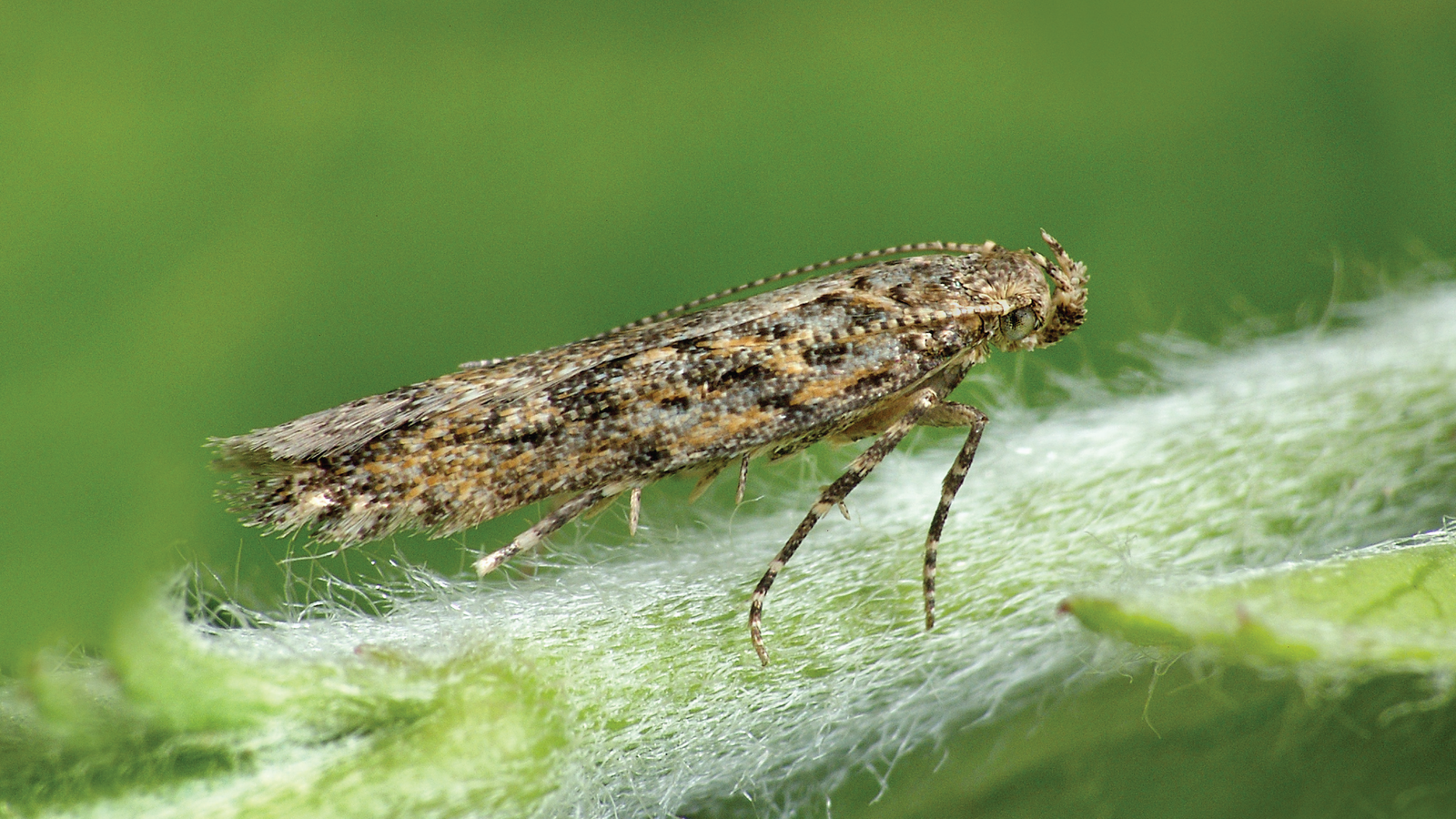Image by Patrick Clement

USDA Awards Biocomplexity Institute Grant to Assess Threat from Devastating Tomato Crop Pest in the United States
As international trade and human mobility increase, so does the spread of invasive and destructive agricultural pests, worsened by climate change and the intensive agricultural practices occurring globally. If left unmitigated, invasive pest infestation can threaten food production, and at worst, destabilize our global food supply. As part of a project funded by the U.S. Department of Agriculture (USDA), researchers from the University of Virginia’s Biocomplexity Institute are focusing their attention on one pest in particular – the South American tomato leafminer or Tuta absoluta.
This tiny moth mines into the leaves of the tomato plant and removes its photosynthetic ability. Once it has attacked the leaves, it moves to the fruit and soil as well as the crates and boxes in which the tomato crops are transported, making it especially difficult to destroy, and therefore, fairly easy to transport and spread. T. absoluta has rapidly spread throughout Europe, Africa, Western and Central Asia, and parts of Central America, impacting tomato crops, the livelihoods of tomato farmers, and entire economies along the way. Without mitigation or prevention, T. absoluta can cause 80 to 100 percent loss in crop yield and affect other solanaceous crops such as eggplants and peppers as well. To date, application of pesticides is the only effective mitigation technique. However, after years of pesticide usage, many countries are reporting that the pest has developed resistance.
In September, the USDA awarded the Biocomplexity Institute a four-year $500,000 collaborative grant to assess the threat this particularly invasive pest poses to the United States and its tomato crops, as well as its potential impact on our food system, farmers, and economy. The grant is part of the USDA’s Food and Agriculture Cyberinformatics Tools Initiative (FACT), which “seeks to catalyze activities that harness big data for synthesizing new knowledge, making predictive decisions, and fostering data-supported innovation in agriculture.”
Institute researchers and their partners from Virginia Tech are employing state-of-the-art statistical and machine learning techniques for data integration and network development to ultimately provide policy makers with guidance to identify food system vulnerabilities, inform monitoring efforts, and assess various intervention strategies. Building on their previous work studying the T. absoluta and its spread throughout South and Southeast Asia (published by The Royal Society, October 2019), Institute researchers are developing dedicated networks to represent domestic agricultural flows and models that account for both self-mediated (eg. natural migration across geographic areas, seasonal production ebbs and flows) and human-mediated (eg. human-assisted transportation, greenhouse survival) pathways of potential spread across the United States.
“Our previous work with USAID exploredT. absoluta and its spread in several developing countries that had already been affected, and assessed its threat to their neighbors,” said Abhijin Adiga, research assistant professor for the Institute’s Network Systems Science and Advanced Computing division. “Using that work as a foundation, we are integrating new data from the USDA, the U.S. Department of Transportation (USDOT), U.S.-based tomato production companies, and many other entities to develop state-of-the-art models to analyze the potential threat to the U.S. food system, intervention strategies, and impact.”
Throughout the four-year project, researchers will work to answer myriad questions related to:
- Introduction and spread – What are the possibilities in which the pest can enter North America, particularly the United States? If it enters a particular region, how quickly will it enter the major production areas? How fast will it spread?
- Monitoring – Where are the best locations to monitor the pest, considering the intensity of the trapping process and limited period of time in which traps are effective?
- Intervention – What are all of the potential options for intervention? What pesticides have already been used and why were they ineffective? What other pesticide options exist? Can we intervene at the trade level to reduce or delay the spread?
- Economic impact – If T. absoluta does enter the United States, what impact will it have both directly (eg. crop damage and loss) and indirectly (eg. impact to the agricultural, restaurant, export industries)?
“The work that we’re doing here with detailed modeling of biological and socio-technical systems fits right in with the Biocomplexity Institute’s mission and some of our previous projects,” Adiga said. “But, this is a very new application, looking at food systems and security, and the human role in facilitating the spread of invasive pests. In addition, we are employing state-of-the-art ecological suitability models to look at the biology of the invasive species, and determine the locations and conditions in which this pest can survive and reproduce in the United States.”
The USDA FACT grant spans from September 2019 through September 2023. Adiga leads the research project as principal investigator along with Division Director Madhav Marathe and Achla Marathe from the Biocomplexity Institute.
"We’re excited to partner with Virginia Tech on this project,” Marathe said. “Together, we’ve been working to develop the new emerging field of networked data science for invasive species such as T. absoluta. Our long-term vision for the program is to create artificial intelligence-driven methods to study problems at the intersection of ecology, climate change, and food security, and the current proposal takes a step in this direction.